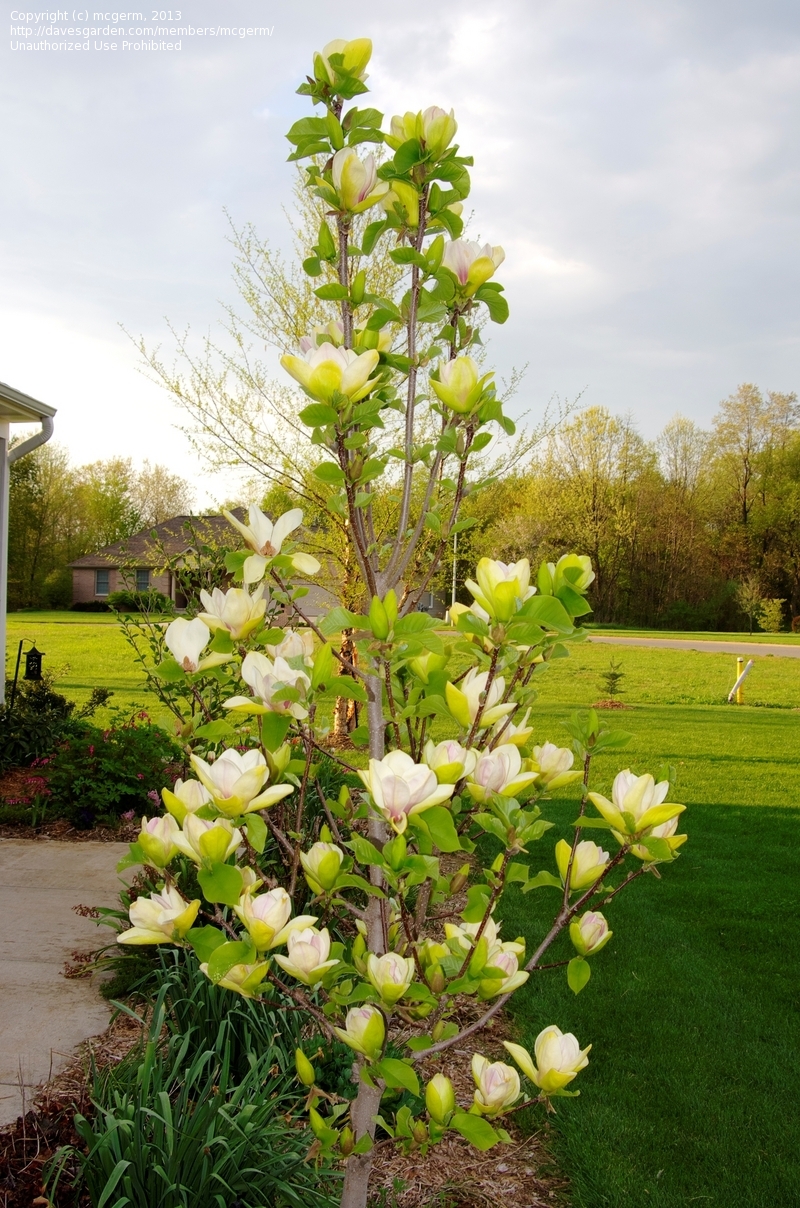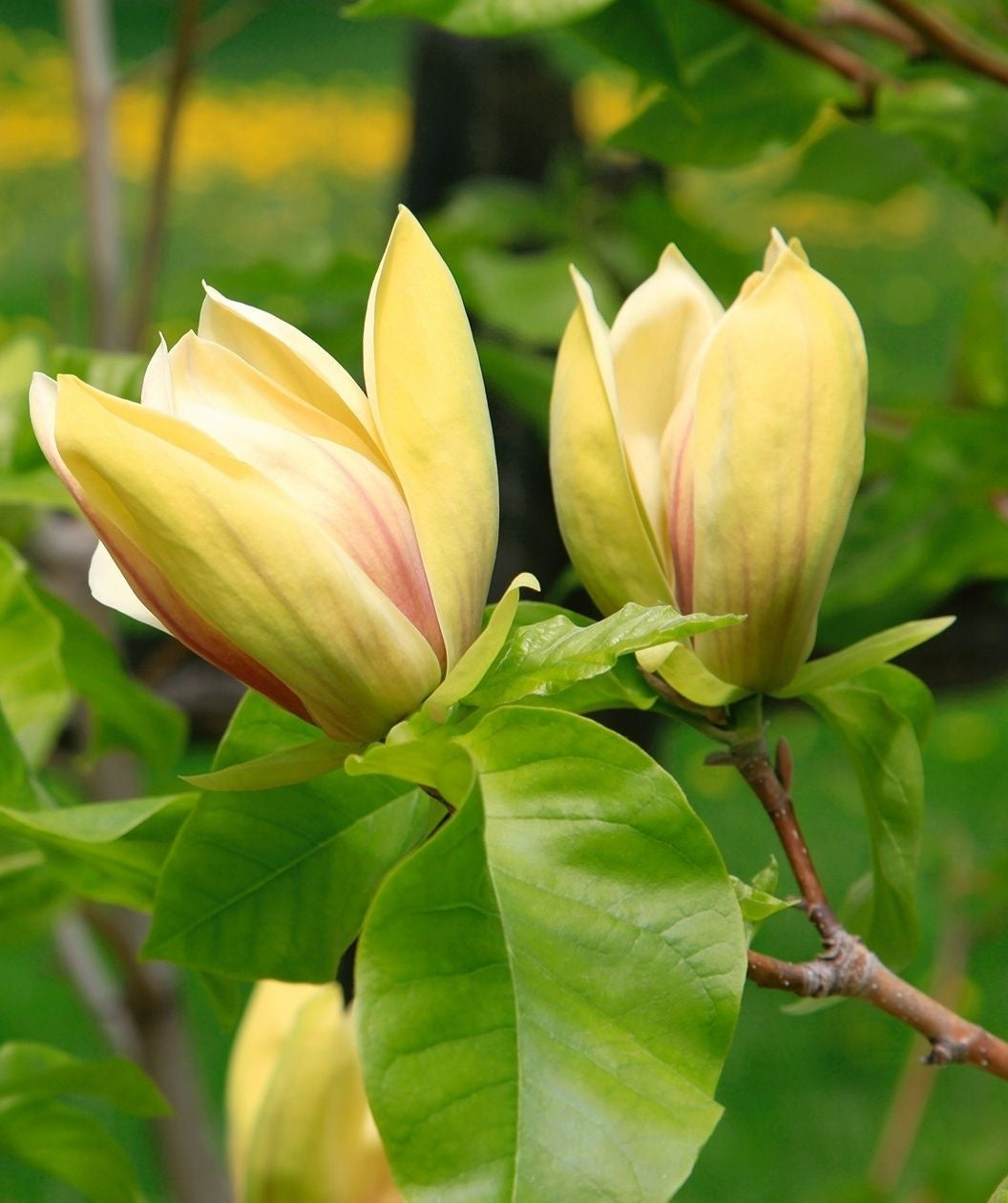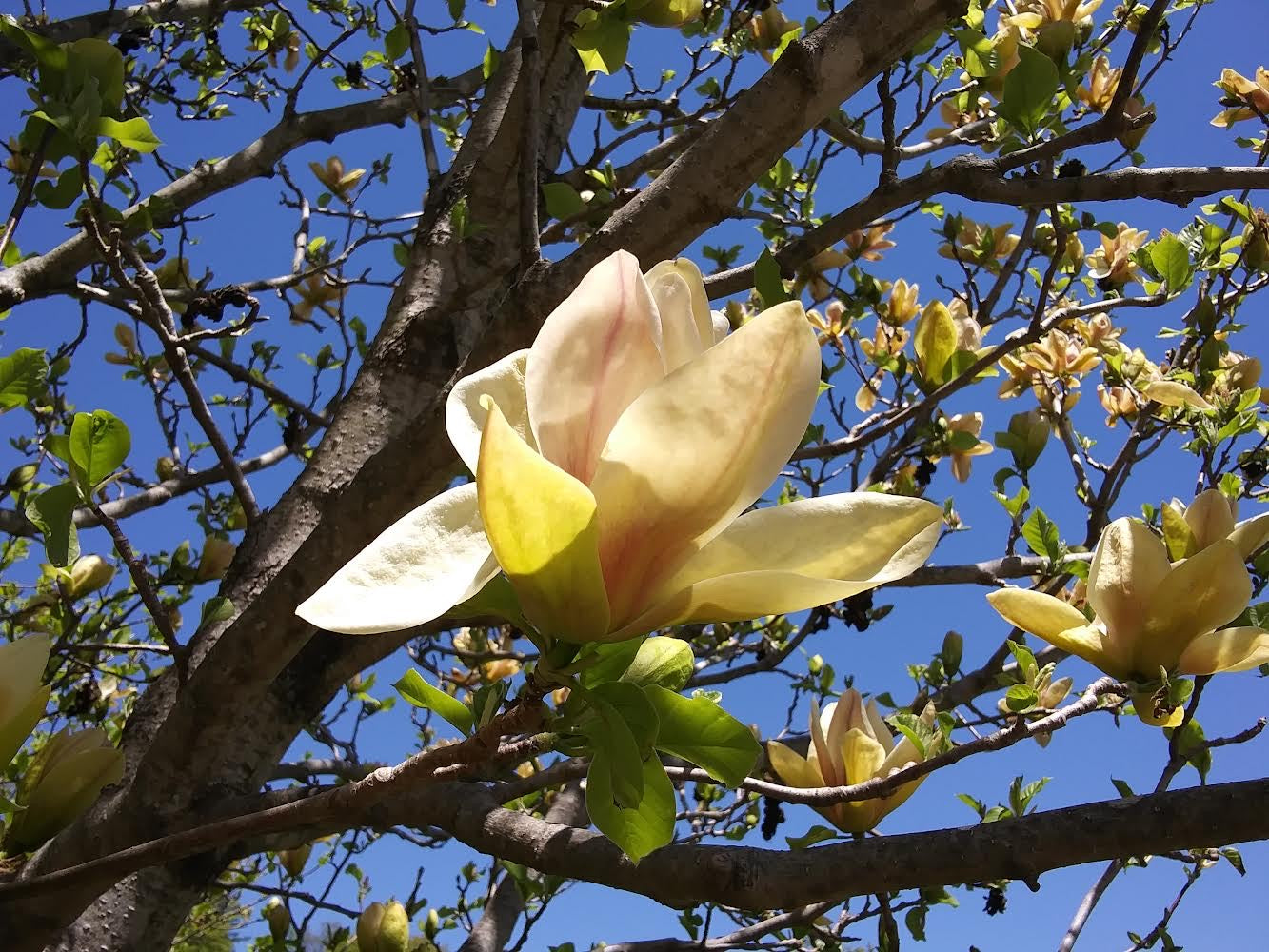# Magnolia ‘Sunsation’: A Ray of Sunshine for Your Garden
If you’re looking to inject a burst of vibrant color and a touch of the exotic into your landscape, look no further than Magnolia ‘Sunsation’. This remarkable hybrid magnolia is a true showstopper, famed for its incredibly unique and dazzling yellow blooms with a blush of pink or red at the base. It’s a relatively new player on the horticultural scene, but it’s quickly earning its stripes as a must-have for any gardener who appreciates beauty, resilience, and a touch of the extraordinary.
Let’s dive into what makes ‘Sunsation’ such a compelling choice, from its stunning aesthetics to its practical growing requirements. We’ll explore why this particular magnolia has so many people buzzing and how you can successfully cultivate it to bring a touch of, well, sunsation to your own backyard.
What Makes Magnolia ‘Sunsation’ So Special?

Right off the bat, the most striking feature of Magnolia ‘Sunsation’ is its flowers. Unlike the classic white or pink magnolias most people picture, ‘Sunsation’ boasts large, goblet-shaped blooms that emerge in early to mid-spring with an almost unbelievable golden-yellow hue. But it’s not just a flat yellow; as the flowers mature, they develop a charming flush of rosy pink or reddish-orange at their base, creating a truly dynamic and captivating display. This unique color combination is what sets ‘Sunsation’ apart from other yellow-flowered magnolias and makes it a focal point in any garden.
Beyond the color, the sheer size of the blooms is impressive. These are substantial flowers that really make a statement. And the flowering period, while relatively short like most magnolias, is intensely beautiful. Imagine your garden bathed in that warm, sunny glow just as spring is truly kicking into gear. It’s a sight to behold.
A Hybrid with Excellent Pedigree
‘Sunsation’ isn’t a naturally occurring species; it’s a carefully bred hybrid, a testament to the skill and patience of horticulturists. It was developed by Phil Savage in the United States, a name well-known in the world of magnolia breeding. Its parentage includes Magnolia ‘Lois’ (another yellow-flowered cultivar) and Magnolia acuminata, often called the cucumber tree. This lineage contributes to ‘Sunsation’s’ robust nature and its impressive floral characteristics. The ‘Lois’ parentage is particularly evident in the strong yellow tones, while the acuminata brings a certain hardiness and adaptability.

The careful breeding behind ‘Sunsation’ means it has been selected not just for its beauty, but also for its performance. This isn’t some delicate diva that needs constant coddling. While it appreciates good care, it’s generally a vigorous grower that can stand up to a range of conditions once established.
Growing Magnolia ‘Sunsation’: The Basics
Like any plant, ‘Sunsation’ has its preferences, but none of them are particularly demanding. If you can provide it with the right environment, it will reward you with years of breathtaking beauty.
Choosing the Right Spot: Sun is Key

As its name suggests, ‘Sunsation’ thrives in sunlight. For the best flowering performance and the most vibrant colors, aim for a location that receives at least 6 hours of direct sunlight per day. Full sun is ideal. While it can tolerate some partial shade, especially in hotter climates where afternoon shade can be beneficial, too much shade will result in fewer flowers and potentially less intense coloration. Think about where the sun tracks across your garden throughout the day and pick a spot that gets that good, healthy dose of morning and early afternoon light.
Consider the mature size of the tree when choosing your location. ‘Sunsation’ can reach a height of 15 to 20 feet and a spread of 10 to 15 feet, making it a medium-sized tree. Give it enough space to grow without crowding other plants or structures. You don’t want to plant it too close to your house where its beautiful branches will be rubbing against the siding or roof as it matures.
Soil Preferences: Well-Drained and Fertile
Magnolias generally prefer well-drained soil that’s rich in organic matter. ‘Sunsation’ is no exception. Avoid heavy clay soils that retain too much water, as this can lead to root rot. If you have compacted or poorly draining soil, it’s a good idea to amend it with plenty of compost, peat moss, or other organic materials before planting. This will improve drainage and provide essential nutrients.
Aim for a slightly acidic to neutral soil pH, ideally between 5.5 and 6.5. Most garden soils fall within this range, but if you’re unsure, a simple soil test can give you a precise reading. If your soil is too alkaline, you can acidify it gradually with elemental sulfur or by incorporating acidic organic matter like pine needles or peat moss.
Watering: Consistent Moisture, Especially When Young
Once established, ‘Sunsation’ is reasonably drought tolerant, but it will perform best with consistent moisture. During its first few years, while it’s getting its roots settled, regular watering is crucial. Water deeply and regularly, especially during dry spells, to encourage a strong root system. A good rule of thumb is to check the soil a few inches down; if it feels dry, it’s time to water.
Mulching around the base of the tree is highly beneficial. A 2-4 inch layer of organic mulch, such as wood chips, shredded bark, or compost, will help retain soil moisture, suppress weeds, and regulate soil temperature. Just be sure to keep the mulch a few inches away from the trunk to prevent moisture buildup and potential disease issues.
Fertilizing: A Gentle Touch
Magnolias aren’t heavy feeders, and too much fertilizer can actually do more harm than good, especially for young trees. If your soil is healthy and rich in organic matter, you may not need to fertilize at all. If you feel your tree needs a boost, a balanced, slow-release granular fertilizer formulated for trees and shrubs can be applied in early spring before new growth begins. Follow the product instructions carefully, and err on the side of under-fertilizing rather than over-fertilizing.
A common mistake is to fertilize newly planted trees immediately. It’s generally better to wait until the tree has settled in, usually after its first growing season, before introducing any additional nutrients. This allows the roots to establish naturally without being forced by external inputs.
Pruning: Less is Often More
Magnolias generally don’t require extensive pruning. The best approach is to let them develop their natural shape. Any pruning should be done after flowering in the spring to avoid removing next year’s flower buds. Focus on removing dead, damaged, or diseased branches. You can also thin out any crossing branches to improve air circulation and maintain the tree’s overall health and aesthetic.
Avoid heavy pruning, as this can stress the tree and reduce flowering. If you need to shape the tree or reduce its size, do so gradually over several years rather than attempting a drastic overhaul in one go. Remember, every cut is a wound, so minimize them where possible.
Magnolia ‘Sunsation’ in the Landscape: Design Ideas
The striking beauty of ‘Sunsation’ makes it a fantastic specimen tree, meaning it’s stunning enough to stand alone as a focal point in your garden. Imagine it gracing a lawn, its vibrant yellow blooms creating a dramatic splash of color against a green backdrop.
A Stunning Specimen Tree
As a specimen tree, ‘Sunsation’ demands attention. Place it where its early spring display can be fully appreciated – perhaps near a patio, a main pathway, or visible from a prominent window in your home. Its unique coloration means it pairs well with plants that have contrasting foliage or flowers. Think about evergreens for a year-round backdrop, or plants with deep purple or blue flowers that will make the yellow pop even more.
Part of a Mixed Border
While magnificent on its own, ‘Sunsation’ can also be incorporated into a larger mixed border. Its upright, somewhat pyramidal growth habit makes it a good choice for adding vertical interest. Surround it with lower-growing shrubs and perennials that complement its form and color. Consider early spring bulbs like daffodils or tulips in shades of purple or white to extend the spring interest. Later-flowering perennials can pick up the slack after ‘Sunsation’ has finished its show.
Complementary Plantings
To enhance the visual appeal of ‘Sunsation’, consider plants that flower either before or after it, or those that offer interesting foliage textures. Early spring ephemerals that bloom before the magnolia can create a layered effect. For later season interest, think about planting hostas or ferns around its base, providing lush green foliage throughout the summer. Deciduous shrubs with interesting fall color can also be a nice addition, extending the season of interest in your garden.
For example, you could underplant with blue-flowering hyacinths or muscari for a cool contrast to the warm yellow. Or, for a bolder look, consider adding plants with deep red foliage like some varieties of Japanese maples, which would truly make the yellow blooms sing.
Common Questions and Considerations
Even with the best care, sometimes questions pop up or issues arise. Knowing a little about potential challenges can help you be prepared.
Is ‘Sunsation’ Prone to Pests or Diseases?
Generally, magnolias are quite resistant to serious pest and disease problems. ‘Sunsation’ is no exception. However, like any plant, they can occasionally encounter issues. Aphids might appear, but they are usually easily controlled with a strong spray of water or insecticidal soap. Scale insects can sometimes be a problem, and if severe, horticultural oil sprays can be effective.
Fungal diseases like powdery mildew or leaf spot are rare but can occur, especially in humid conditions or if air circulation is poor. Ensuring good air circulation through proper spacing and occasional light pruning can help prevent these issues. If you notice any unusual symptoms, it’s always a good idea to identify the problem accurately before applying any treatments. Your local cooperative extension office is a great resource for diagnostics.
Winter Hardiness: Can It Handle the Cold?
Magnolia ‘Sunsation’ is quite winter hardy, generally thriving in USDA Hardiness Zones 5-9. This means it can withstand winter temperatures down to -20°F (-29°C). In colder zones, protecting young trees with a layer of mulch around the base and potentially wrapping the trunk in burlap during the first few winters can offer extra protection. For those at the colder end of its hardiness range, planting in a sheltered location, perhaps near a south-facing wall, can also provide a microclimate that benefits the tree.
In very cold climates, or during unusually harsh winters, late frosts after the flower buds have formed can sometimes damage the blooms. This is a risk with many early-flowering trees. While you can’t control the weather, providing good overall care helps the tree recover more quickly.
Transplanting Magnolia ‘Sunsation’
Like many trees, ‘Sunsation’ is best transplanted when dormant, typically in late fall after leaf drop or in early spring before new growth emerges. Magnolias have fleshy roots that can be somewhat sensitive to disturbance, so it’s important to dig a wide root ball and handle it carefully. Ensure the new planting hole is prepared properly, and water thoroughly after transplanting to help settle the soil around the roots.
If you are purchasing a balled-and-burlapped (B&B) tree or a container-grown plant, planting instructions will usually be provided by the nursery. Follow these closely for the best results. The quicker the tree gets into its new home, the less stress it will experience.
The Long-Term Appeal of ‘Sunsation’
While the spring bloom is undoubtedly the star of the show, ‘Sunsation’ offers more than just a fleeting moment of glory. Its attractive, upright form and lush green foliage provide a pleasant backdrop for the rest of the growing season. In the fall, the leaves often turn a lovely golden-yellow, offering another season of interest before they drop for the winter.
As the tree matures, its bark can also develop interesting textures, adding to its architectural appeal during the dormant season. The overall structure of the tree, even without leaves or flowers, is quite appealing, providing good bones to the garden.
The relatively low maintenance requirements, combined with its stunning visual impact, make ‘Sunsation’ a wise investment for any gardener looking to create a lasting impression. It’s a tree that will grow with your garden, providing beauty and enjoyment for many years to come. It’s a focal point that will have neighbors stopping to ask what that incredible tree is, and you’ll have the pleasure of telling them all about your magnificent Magnolia ‘Sunsation’.
Conclusion
Magnolia ‘Sunsation’ is truly a horticultural marvel, offering an unparalleled display of large, vibrant yellow blooms with a charming pink flush. Its unique coloration, combined with its robust nature and relatively easy care, makes it an outstanding choice for gardens in USDA Zones 5-9. Whether used as a majestic specimen tree or integrated into a larger landscape design, ‘Sunsation’ promises to bring a ray of sunshine and a touch of the extraordinary to your outdoor space each spring. By providing ample sunlight, well-drained soil, and consistent moisture, you can ensure this magnificent magnolia thrives and becomes a cherished highlight of your garden for years to come.
Frequently Asked Questions (FAQs)
What is the mature size of Magnolia ‘Sunsation’?
Magnolia ‘Sunsation’ typically grows to a height of 15 to 20 feet with a spread of 10 to 15 feet, making it a medium-sized tree suitable for many home landscapes.
How long do the flowers of ‘Sunsation’ last?
Like most magnolias, the flowering period for ‘Sunsation’ is relatively short, usually lasting for 2 to 3 weeks in early to mid-spring, depending on local weather conditions.
Can Magnolia ‘Sunsation’ grow in a large container?
While young ‘Sunsation’ trees can be grown in large containers for a few years, they will eventually outgrow them. For long-term success, it’s best to plant them in the ground where their root system can fully develop.
Does ‘Sunsation’ have any fragrance?
Magnolia ‘Sunsation’ flowers have a very light, subtle fragrance, which is generally not as pronounced as some other magnolia varieties. The primary appeal of this cultivar is its stunning visual display.
When is the best time to plant Magnolia ‘Sunsation’?
The best time to plant Magnolia ‘Sunsation’ is in early spring after the last frost or in early fall before the ground freezes, allowing the tree to establish its root system before extreme temperatures set in.

